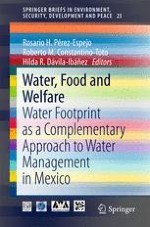This book addresses the following topics: the contemporary model for water management and alternative approaches; the socioeconomic framework, water policy and institutions; water use for food purposes, water-resources inventory and irrigation; manifestations of welfare loss and water prices; change in dietary patterns and water security; hydrological stress and pressures on water availability; groundwater management problems; vulnerability and climate change; water demand of major crops; gray water footprint and water pollution; gray water footprint and mining; virtual water and food trade; estimates of the water footprint of four key cereals, forage, livestock and bottled drinks. It is the result of a cooperation between 16 researchers from eleven Mexican academic institutions.
